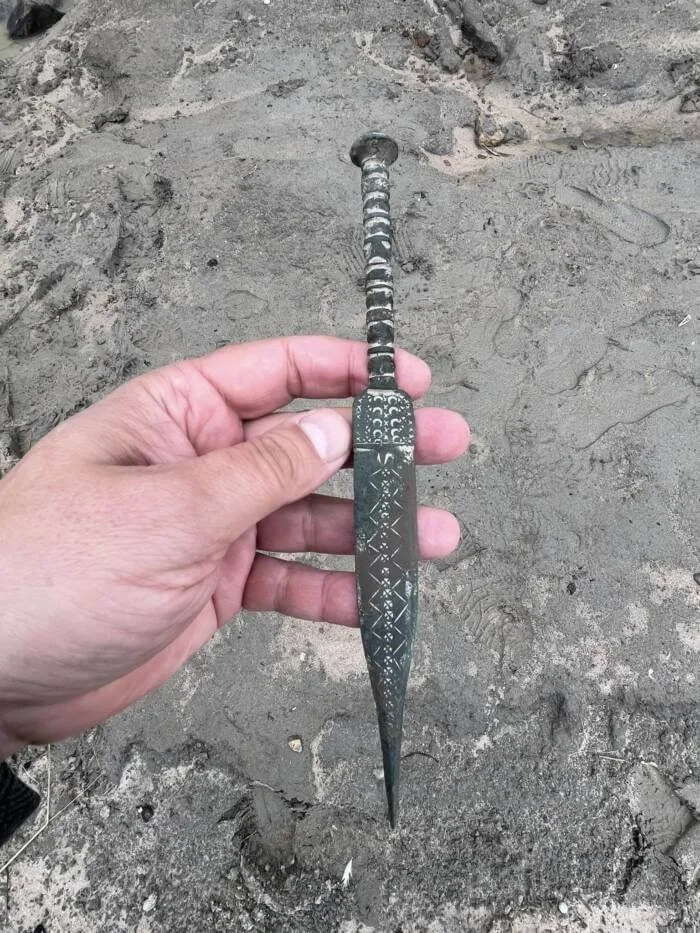A recent post claims that after a violent storm in northern Poland, a section of cliff collapsed and revealed a 2,800‑year‑old ceremonial knife embedded in clay. According to the story, two metal detectorists, Katarzyna Herdzik and Jacek Łukoski, discovered the artifact on the Baltic coast, and it is now being handled by the Museum of the History of Kamień Land. The knife is said to date to the Hallstatt period and bears intricate motifs suggesting use in sacred rites rather than warfare.
Yet, as fascinating as the narrative sounds, we at The Archaeologist believe there are substantial reasons to doubt its authenticity until further proof emerges. The article offers no independent archaeological corroboration, no published laboratory analyses, and no record of stratigraphic context—or how the artifact was documented in situ by professionals. The exceptionally pristine condition of the dagger is also suspicious for something claimed to have lain exposed in clay for nearly three millennia.
Until the museum or a peer‑reviewed journal publishes detailed metallurgical tests, microscopic wear analysis, radiometric dating, and verified provenance, the story must be viewed with caution. Artifacts falling intact from cliffs during storms are a favorite trope in sensational archaeology, and too frequently these accounts remain unverified and untraceable. We urge readers to treat this claim as unconfirmed and await transparent scientific reporting before accepting it as fact.










